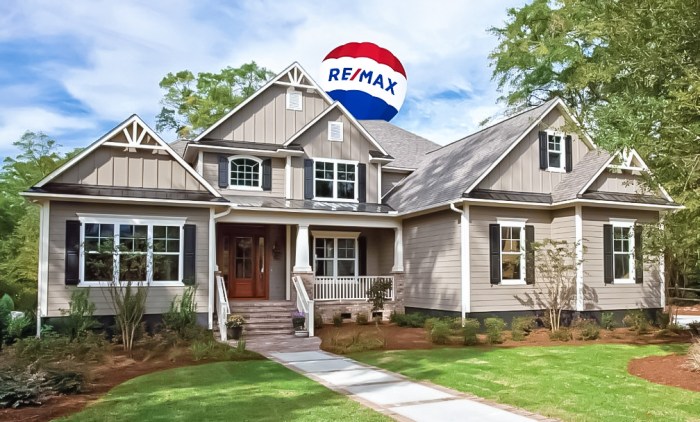Understanding the Market for Private Landlord Houses: Private Landlords Houses For Rent

Source: landlordgurus.com
Private landlords houses for rent – The private rental market is a dynamic landscape shaped by various factors influencing supply, demand, and pricing. Understanding these factors is crucial for landlords to effectively market and manage their properties.
Typical Renter Profile
Renters seeking private landlord houses represent a diverse group, but common characteristics include young professionals, families, and individuals seeking more space or specific amenities than apartments offer. Many prioritize location, commute times, and access to schools or local amenities.
High-Demand Geographic Areas
High-demand areas typically correlate with proximity to employment centers, good schools, and desirable amenities. For example, areas near major universities or downtown business districts often command higher rental rates due to increased competition. Conversely, suburban areas with good schools and family-friendly environments also see strong demand.
Rental Rate Comparison

Source: smokefreehousinginfo.com
Rental rates vary significantly depending on location, property size, condition, and amenities. For instance, a three-bedroom house in a highly sought-after urban neighborhood might command significantly higher rent than a similar property in a more suburban location. Detailed market research is essential to accurately price a property competitively.
Prioritized Features and Amenities
Renters prioritize features like updated kitchens and bathrooms, ample storage space, private yards or patios, and off-street parking. The importance of specific amenities varies depending on the renter’s profile; families might prioritize a large backyard, while young professionals may prefer proximity to public transportation.
Hypothetical Marketing Campaign
A targeted marketing campaign could utilize high-quality online listings with professional photography, emphasizing desirable features and location benefits. Social media advertising, targeted to specific demographics based on location and interests, could further enhance reach and engagement. The campaign could also leverage local partnerships with real estate agents or community organizations.
Analyzing Property Listings and Descriptions
Effective property listings are crucial for attracting quality tenants quickly. This section will explore best practices for creating compelling and informative listings.
Effective and Ineffective Property Descriptions
Effective descriptions use strong, descriptive language, highlighting key features and benefits. For example, instead of “nice kitchen,” use “modern kitchen with granite countertops and stainless steel appliances.” Ineffective descriptions are vague, generic, and lack detail, failing to capture a potential renter’s attention.
Best Practices for Showcasing Property Features
High-quality photos and virtual tours are essential. Detailed descriptions should focus on the benefits of each feature rather than simply listing them. Accurate information about square footage, parking, and appliances is critical to avoid misunderstandings.
Comparative Analysis of Property Listings
Comparing three listings – one with strong photography and a detailed description, one with poor quality photos and a vague description, and one with a misleading description – reveals how presentation significantly impacts tenant interest. The well-presented listing clearly outperforms the others.
Checklist of Essential Information
A comprehensive checklist should include: property address, number of bedrooms and bathrooms, square footage, rental price, pet policy, available amenities, move-in date, application process details, contact information.
Impact of High-Quality Photos
High-quality photos significantly improve a property’s appeal. Professional photography showcases the property’s best features in a flattering light, creating a positive first impression and encouraging potential renters to schedule a viewing.
Tenant Screening and Selection Processes
A thorough tenant screening process protects landlords from potential problems. This involves multiple steps to verify applicant information and assess their suitability.
Steps in Tenant Screening
The process includes verifying income and employment history, checking credit reports, conducting background checks (including criminal history), and performing reference checks. Landlords should carefully review all information to make informed decisions.
Legal Implications of Tenant Discrimination
Fair Housing Laws prohibit discrimination based on race, color, national origin, religion, sex, familial status, or disability. Landlords must adhere to these laws to avoid legal repercussions.
Methods for Verifying Income and Creditworthiness
Income verification can be done through pay stubs, bank statements, or employer verification. Credit reports from reputable agencies provide a comprehensive assessment of creditworthiness. Landlords should clearly Artikel their requirements upfront.
Potential Red Flags in Tenant Applications
Red flags include gaps in employment history, inconsistent income information, evictions, bankruptcies, or a history of late payments. Landlords should carefully investigate any inconsistencies.
Rental Application Form
A well-designed application form clearly Artikels all required information. The form should be easy to complete and include sections for personal information, employment history, rental history, references, and authorization for background checks.
| Personal Information | Employment History | Rental History | References |
|---|---|---|---|
| Name, Address, Phone, Email | Employer, Position, Income, Start Date | Previous Addresses, Landlord Contact Information | Name, Address, Phone, Relationship |
Lease Agreements and Legal Considerations
A well-drafted lease agreement protects both landlords and tenants. It should be clear, concise, and legally sound.
Common Clauses in Lease Agreements
Common clauses include rent amount and payment schedule, lease term, security deposit details, late payment penalties, property condition, responsibilities for repairs and maintenance, pet policies, and eviction procedures. Each clause should be unambiguous and easily understood.
Importance of Clear and Concise Language
Using plain language avoids ambiguity and potential disputes. Legal jargon should be minimized, and all terms should be clearly defined. Both parties should understand their rights and obligations.
Landlord’s Responsibilities Regarding Property Maintenance
Landlords are generally responsible for maintaining the property’s habitability, including structural repairs, plumbing, heating, and electrical systems. The lease agreement should specify the landlord’s responsibilities clearly.
Legal Procedures for Evicting a Tenant
Eviction procedures vary by jurisdiction but typically involve providing written notice to the tenant, filing a lawsuit in court, and obtaining a court order for eviction. Landlords must follow the legal process carefully to avoid legal challenges.
Sample Lease Agreement Clause Addressing Pet Policies, Private landlords houses for rent
A well-defined pet policy protects both the landlord and the tenant. It should Artikel permitted pets, any associated fees, and responsibilities for pet-related damage.
- Permitted pets: Dogs and cats only.
- Pet fee: $300 non-refundable fee per pet.
- Monthly pet rent: $50 per pet.
- Tenant responsibility: Clean up after pets, maintain pet’s vaccination records, repair any damage caused by pets.
Managing Rental Properties Effectively
Effective property management maximizes rental income and maintains positive tenant relationships. This requires proactive strategies and efficient systems.
Strategies for Maximizing Rental Income and Tenant Satisfaction
Regular maintenance prevents costly repairs and keeps tenants happy. Competitive rental rates attract quality tenants. Clear communication and prompt responses to tenant concerns build positive relationships.
Effective Communication Methods
Establish clear communication channels, such as email or a tenant portal, for handling requests and resolving issues promptly. Regular communication updates regarding property maintenance or community announcements keep tenants informed.
Common Issues and Solutions
Common issues include late rent payments, maintenance requests, tenant disputes, and property damage. Establishing clear policies, using online payment systems, and having a responsive maintenance team can mitigate these issues.
Importance of Regular Property Inspections
Regular inspections identify potential problems early, preventing costly repairs and maintaining property value. Inspections should be conducted according to local laws and tenant notification requirements.
System for Tracking Rental Payments and Maintenance Requests
A well-organized system is essential for efficient property management. This can be achieved through spreadsheets, property management software, or a custom-designed database.
| Tenant Name | Unit Number | Rent Due Date | Rent Paid Date | Maintenance Request | Status |
|---|---|---|---|---|---|
| John Doe | 1A | 01/15/2024 | 01/12/2024 | Leaking faucet | Completed |
Marketing and Advertising Strategies
Effective marketing attracts qualified tenants and ensures high occupancy rates. This section explores various marketing channels and strategies.
Marketing Channels for Reaching Potential Renters

Source: co.uk
Online channels like real estate websites (Zillow, Trulia), social media platforms (Facebook, Instagram), and dedicated rental listing sites are highly effective. Offline methods, such as local newspapers or community bulletin boards, can also be used strategically.
Effectiveness of Online vs. Offline Advertising
Online advertising offers wider reach and targeted marketing options. Offline advertising can be more cost-effective for local targeting, depending on the market.
Use of Professional Photography and Videography
High-quality visuals significantly enhance property appeal. Professional photography and virtual tours create a more engaging experience for potential renters.
Sample Social Media Post
A sample social media post might include a captivating image or video of the property, highlighting key features and benefits, and including a link to the full listing. The post should target a specific demographic based on location and interests.
Flyer Showcasing Property Features
A flyer could feature a large, high-quality photo of the property’s exterior, with smaller images showcasing key interior features like the kitchen and living room. The text should highlight the property’s location, amenities, and rental price, with clear contact information.
FAQ Resource
What are the typical costs associated with renting from a private landlord?
Costs typically include rent, security deposit, and potentially application fees, pet fees, or other miscellaneous charges Artikeld in the lease agreement. These costs vary widely based on location, property size, and amenities.
How can I find a reputable private landlord?
Thoroughly research potential landlords online, checking for reviews and verifying their licensing and registration. Request references and conduct in-person property viewings to assess the landlord’s professionalism and the property’s condition.
What are my rights as a tenant renting from a private landlord?
Tenant rights vary by location but generally include the right to a habitable dwelling, protection against discrimination, and reasonable notice for rent increases or lease termination. Consult local tenant laws for specific details.
What are a landlord’s responsibilities regarding repairs and maintenance?
Finding the right rental property can be challenging, especially when dealing with private landlords’ houses for rent. However, if you’re considering a longer-term commitment and eventual ownership, exploring options like those offered through a housing rent own program might be beneficial. Ultimately, understanding your needs will help you decide whether a private landlord’s house or an alternative ownership scheme best suits your circumstances.
Landlords are generally responsible for maintaining the property’s habitability, including major repairs and addressing issues impacting health and safety. The specific responsibilities are often detailed in the lease agreement and local landlord-tenant laws.
